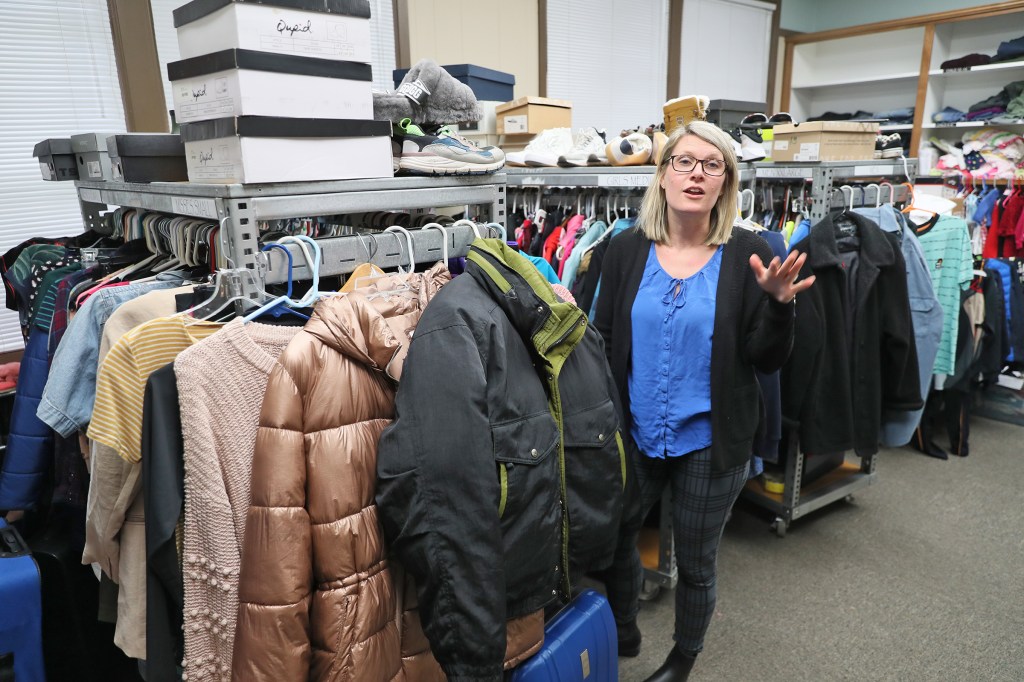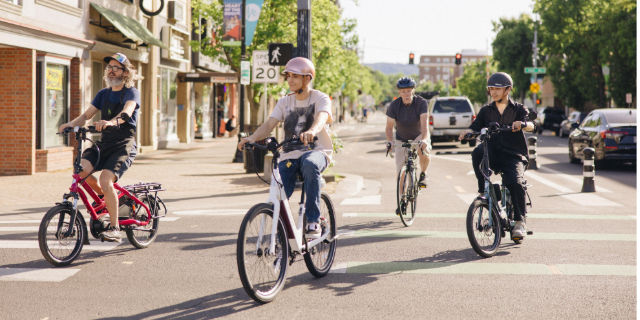Jackson County among those with most unhoused or housing-insecure students
Published 10:15 am Saturday, December 9, 2023

- Cheyenne Nichols, school-based services program officer for the Maslow Project, said the nonprofit tries to give out new clothing to students who are in need, rather then giving them used clothes.
While Jackson County is the sixth-most populated county in Oregon, it has the third-highest number of students experiencing being unhoused or in unstable housing, according to the Oregon Department of Education.
The Oregon Statewide Report Card — released Nov. 30 — displayed a rise in the number of students experiencing homelessness statewide, with a 14.9% increase compared to the 2021-22 academic year.
“When you look at the percentages and actual numbers representing real students, it’s mind-boggling,” said Superintendent Brent Barry of the Phoenix-Talent School District. “These kids show up to school every day and are doing the best they can.”
The Phoenix-Talent School District has 190 students that are unhoused or experiencing unstable housing conditions.
The Medford School District, meanwhile, has the fourth-most students in the state experiencing being unhoused or in unstable housing with 974 K-12 students.
Looking to curtail the challenges brought to unhoused students, many school districts in Jackson County dedicate staff, programs and other resources to assist them in multiple ways in accordance with the McKinney Homeless Assistance Act, also known as the McKinney-Vento Act.
The 1987 federal act establishes rights and services to children and youth experiencing homelessness, and school districts have designated liaisons to assist the students in myriad ways.
The liaison role includes helping to purchase school supplies, providing access to technology and aiding students with transportation to and from school, said Kelly Soter, director of equity and community care with the Phoenix-Talent School District.
“It’s really about removing barriers and obstacles so kids can come to school knowing that they’re being supported,” Soter added.
But for some McKinney-Vento students, many of their basic needs occur after school hours or away from the school campus.
“Needs aren’t just happening between 8 a.m. and 4 p.m.,” Barry said.
That’s where local nonprofit the Maslow Project comes in.
The Maslow Project works in collaboration with school districts in Jackson and Josephine counties and as far as the California border, and serves a caseload of more than 3,000 students and families. The nonprofit has around 20 case managers.
“We have case managers that do mobile outreach and meet the students where they’re at,” said Hannah Borgerson, community engagement specialist for the Maslow Project. “A lot of Maslow Project case managers are that rock and emotional support (for students).”
The organization’s multipronged approach to providing basic needs, collaborating with local school districts and meeting their clients where they’re at and supporting them has found success in terms of graduation rates.
Last year, McKinney-Vento students supported by the Maslow Project had a 92% graduation rate.
“We know that lack of a high school diploma is one of the leading predictors of adult chronic homelessness; it’s why we have such a strong academic focus,” said Cheyenne Nichols, school-based services program officer for the nonprofit. “Youth are looking for connection and support and positive relationships, and (for) our boots-on-the-ground model of meeting students where they’re at in a goal-based, supportive way, we do see progress.”
The high number of McKinney-Vento students in the Medford School District is “heartbreaking,” said Andrea Partsafas, executive director of federal programs and school improvement for the district.
“I hate the idea that
anyone in the community is struggling to find housing,” she said. “I’m grateful we have so many community agencies working with us and such compassionate teachers and staff in school who are always looking for ways to remove barriers.”
“It’s not just (the Medford School District) or Maslow. We’re all working together,” Partsafas added.
Other organizations in the Rogue Valley and Southern Oregon that play a role in assisting McKinney-Vento students include ACCESS and Goodwill’s voucher program, as well as the state’s Emergency Solutions Grant program.
While local school
districts and the Maslow Project have had limited
success in applying for grants and funding at the federal and state level, the differing definitions of what it means to be unhoused cuts the organization and district from certain funding from the U.S. Department of Housing and Urban Development.
While HUD’s definition entails people facing the most drastic circumstances of being unhoused, such as living outdoors, on public property or in a homeless shelter, the McKinney Homeless Assistance Act
includes individuals lacking a fixed, regular and adequate nighttime residence.
This can include people living in hotels, couch surfing, temporarily housed with a relative or friend or other situations.
“A lot of the federal dollars that come into our community and come down the pipe don’t capture those folks,” Nichols said. “Those federal resources are usually designed to target folks who are experiencing homelessness that meet the HUD definition, and that doesn’t capture students and families under
the McKinney-Vento definition.”
“For money coming from the federal government through executive orders, a lot of our families are not eligible for those funds,” Nichols added.
According to Nichols, conversations have been
ongoing to expand or combine the two definitions of being unhoused to qualify students and families for more funding and social safety nets.
“One day, if we could see the HUD definition and the McKinney-Vento definition come together it would be amazing, and hopefully we could see greater progress for our youth,” Nichols said. “It’s not about choosing the McKinney-Vento definition over the HUD definition, it’s about bringing the two together and creating a wider umbrella so that no one gets left out.”
For more information about the Maslow Project, visit maslowproject.com.






